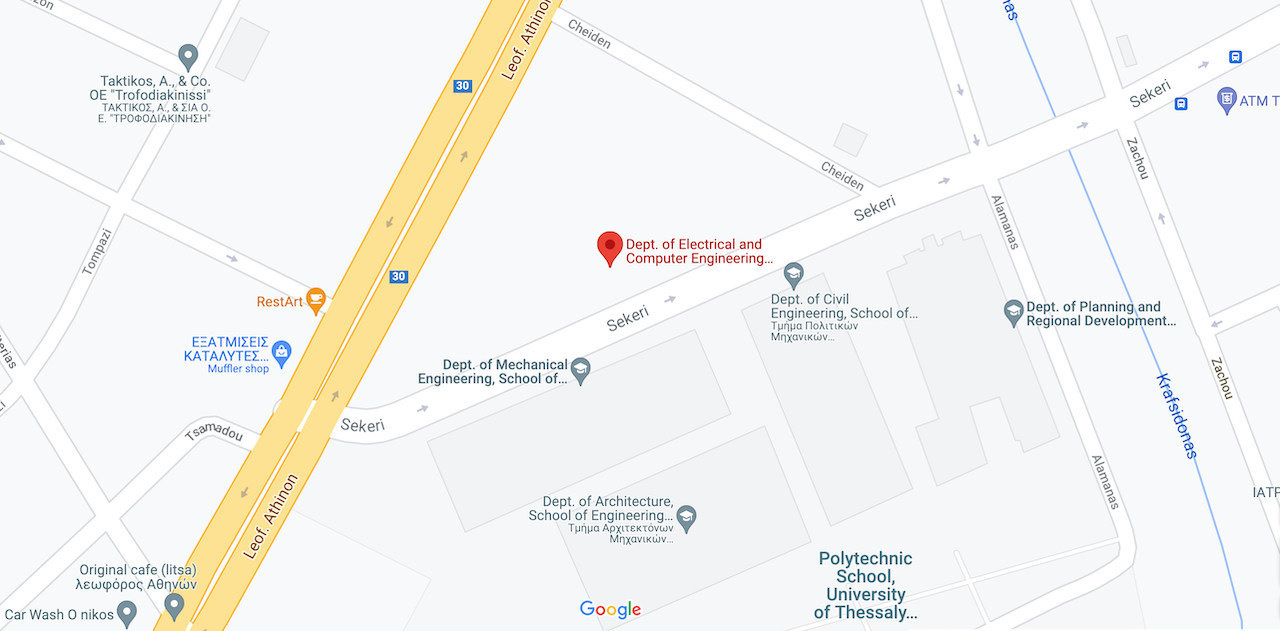| Subject Area | Signals, Communications, and Networking |
|---|---|
| Semester | Semester 7 – Fall |
| Type | Elective |
| Teaching Hours | 4 |
| ECTS | 6 |
| Prerequisites |
|
| Course Site | http://eclass.uth.gr |
| Course Director |
|
| Course Instructor |
|
- Channel models: Large scale fading (Friis equation, Link budget, shadowing definition), Small Scale fading (Slow/Fast fading, Frequency select. fading), Rayleigh fading.
- Digital Communications in AWGN channels, Introduction to detection, Derivation of BER for AWGN, LTI model for fading channels, Detection in Rayleigh Slow Fading Channel, Outage and BER derivations. Basic problem of fading channels.
- Need for Diversity. Diversity types: Time diversity with repetition code, Antenna receive diversity with MRC (outage/BER derivations), Transmit diversity with Alamouti, space time coding introduction, Frequency diversity, MLSD algorithm.
- MIMO systems, Generalization of diversity schemes for MIMO systems, The benefit of fading: Spatial Multiplexing. MIMO Spatial Mulitplexing Receiver Architectures: MMSE, VBLAST, SIC. Case study for IEEE 802.11n.
- Spread Spectrum DSSS, CDMA
- OFDM detailed analysis, optimal power allocation. Combination of OFDM and MIMO for combating fading, case study for 802.11a/n and the cellular standard LTE-A.
- Combating interference: Beamforming, Multi-user MIMO, Case study for 802.11ac
The course deals with advanced topics of digital communication systems. Emphasis is given to the design of subsystems in modern digital communication systems. The main objectives of the course are three. The understanding of the need for diversity in digital wireless communication systems with fading. Second, the understanding of using multiple antennas for diversity but also for spatial multiplexing. The understanding of OFDM. The previous three objectives are important because they are the base for all modern wireless communication systems. Their role in modern standards like the IEEE 802.11ac, and LTE-Α will also be analyzed.
After successfully completing the course the student will be in a position to:
- Explain diversity, space-time coding, spatial multiplexing, OFDM
- Understand the best technique that should be deployed depending on the standard (Wifi, cellular, sensor network)
- To fully design in MATLAB a transceiver system
- To use Monte-Carlo simulation
The previous learning outcome will be evaluated based on 6 MATLAB homeworks that simulate all the techniques taught in class. Also through a final exam that requires numerical problem solving.







